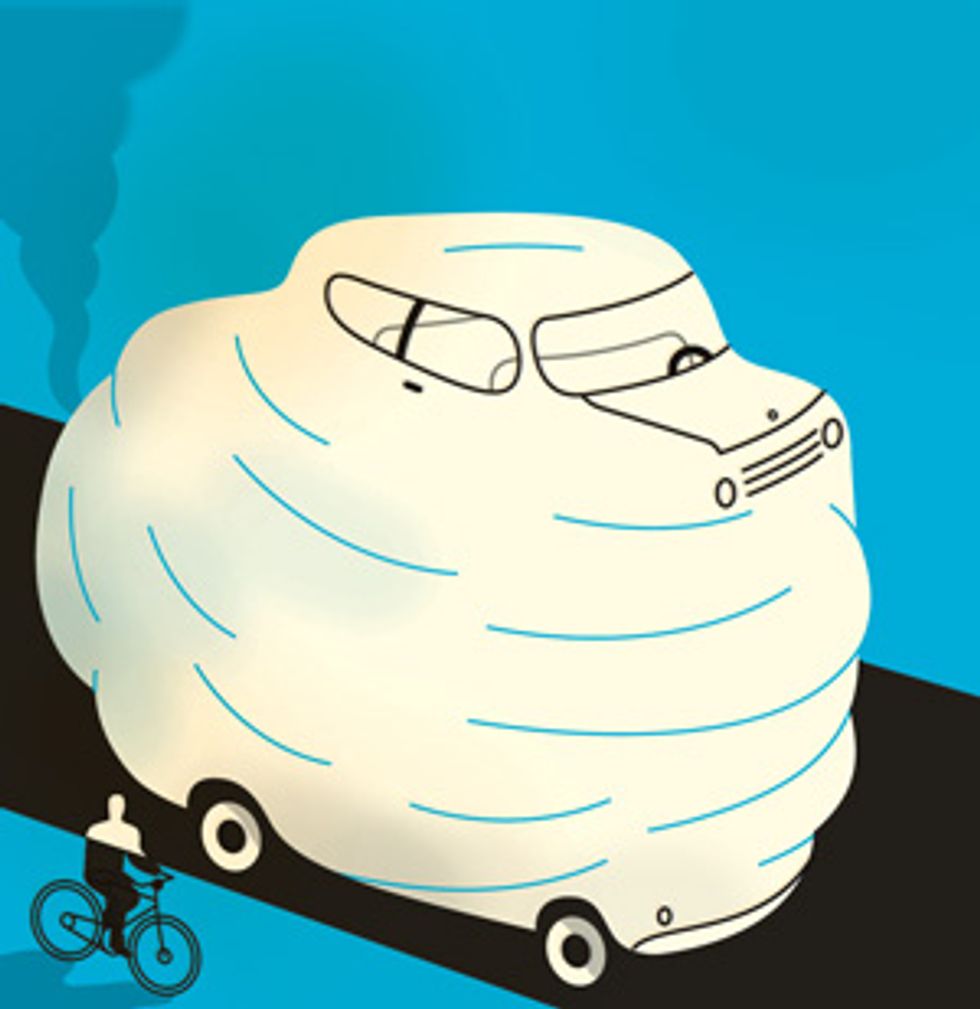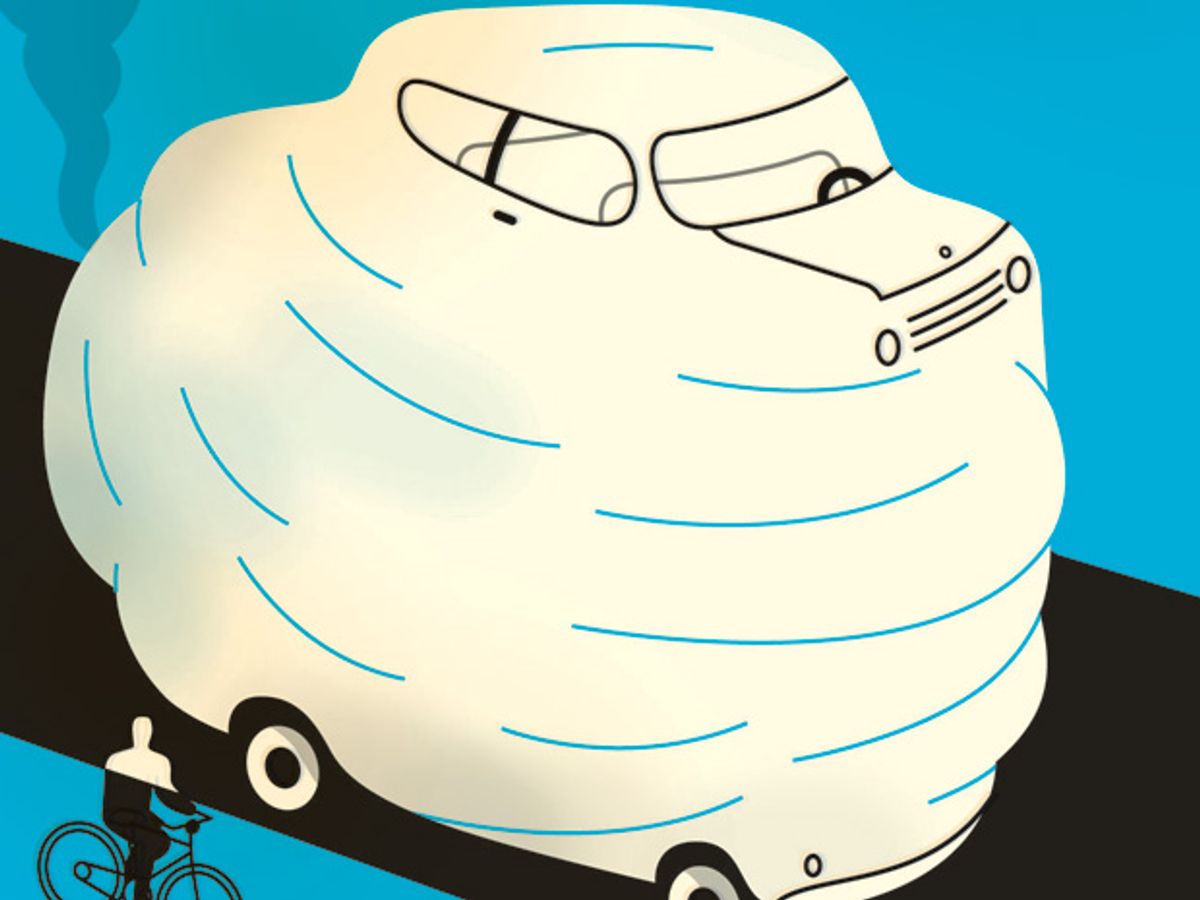
A century ago the best-selling car in the United States, Ford’s Model T, wrung a watt from every 12 grams of its internal-combustion engine. Now, engines in best-selling American cars are getting a watt per gram—a 92 percent improvement. That is the one bit of happy news I am going to impart today.
Now for the bad news: In the past 100 years average engine power has increased more than 11-fold, to about 170 kilowatts. This means that despite a huge drop of mass/power density, today’s typical car engine is hardly lighter than it was a century ago—and the average car itself has become much heavier: Its mass has roughly tripled, reaching more than 1,800 kilograms (the average for all light-duty vehicles, nearly half of which are pickups, SUVs, and minivans).
And because more than three-quarters of U.S. commuters drive alone, you get the worst ratio of vehicle-to-passenger weight since a mahout last rode a bull elephant to work.
That ratio is what matters. Because for all the auto industry’s talk about “lightweighting”—using aluminum, magnesium, and even carbon-fiber polymers to reduce total weight—this ratio ultimately limits the energy efficiency you can achieve.
Here, in ascending order, are a few of the weight ratios that a 70-kg passenger can achieve:
- 0.1 for a 7-kg bicycle.
- 1.6 for Italy’s 110-kg Vespa scooter.
- 5 or less for a modern bus, such as those based on New Flyer’s designs (and that’s just if you count sitting passengers).
- 7.3 for France’s 510-kg Citroën 2CV (“deux chevaux,” or two horses), back in the 1950s.
- 7.7 for the Model T and also for Japan’s Shinkansen, or bullet train, which celebrated its 50th anniversary in October. The train’s frugal ratio owes as much to design as it does to a high ridership rate.
- 12 for a Smart car, 16 for a Mini Cooper, 18 for my own Honda Civic LX, 20 and change for the Toyota Camry.
- 26 for the average American light-duty vehicle in 2013.
- 28 for the BMW 740i.
- 32 for the Ford F-150, the best-selling American vehicle.
- 39 for the Cadillac Escalade EXT.
Of course, you can get quite spectacular ratios by pairing the right car with the right driver. I regularly see a woman driving a Hummer 2 that easily weighs 50 times as much as she does. That’s like going after a fly with a steam shovel.
To put it all in perspective, consider that the latest Boeing, the 787-9, does better than a small Citroën. Its maximum takeoff weight is 253 metric tons; with 280 passengers weighing 20 metric tons and another 20 metric tons of cargo, the overall weight-to-payload ratio comes to just 6.3.
Cars got heavy because part of the world got rich and drivers got coddled. Light-duty vehicles are larger, and they come equipped with more features, including automatic transmissions, air conditioning, entertainment and communication systems, and an increasing number of servomotors. And new battery-heavy hybrid drives and electric cars will not be lighter: The small all-electric Ford Focus weighs 1.7 metric tons, General Motors’ Volt is more than 1.7 metric tons, and the Tesla is just above 2.1 metric tons.
Lighter designs would help, but obviously, nothing could halve (or quarter) the ratio as easily as having two or four people in a car. And yet in the United States, that is the hardest thing to enforce. The latest commuting survey from the U.S. Census Bureau shows that in 2012, the percentage of Americans who drove to work alone was 76 and that carpooling was down from 20 percent in 1980 to just 12 percent, as was the use of public transportation (down from 6 percent to 5 percent).
And so the outlook is for ever-better engines or electric motors in heavy vehicles used in a way that results in the worst weight-to-payload ratios for any mechanized means of personal transportation in history.
These cars may be, by some definition, smart—but they are not wise.
